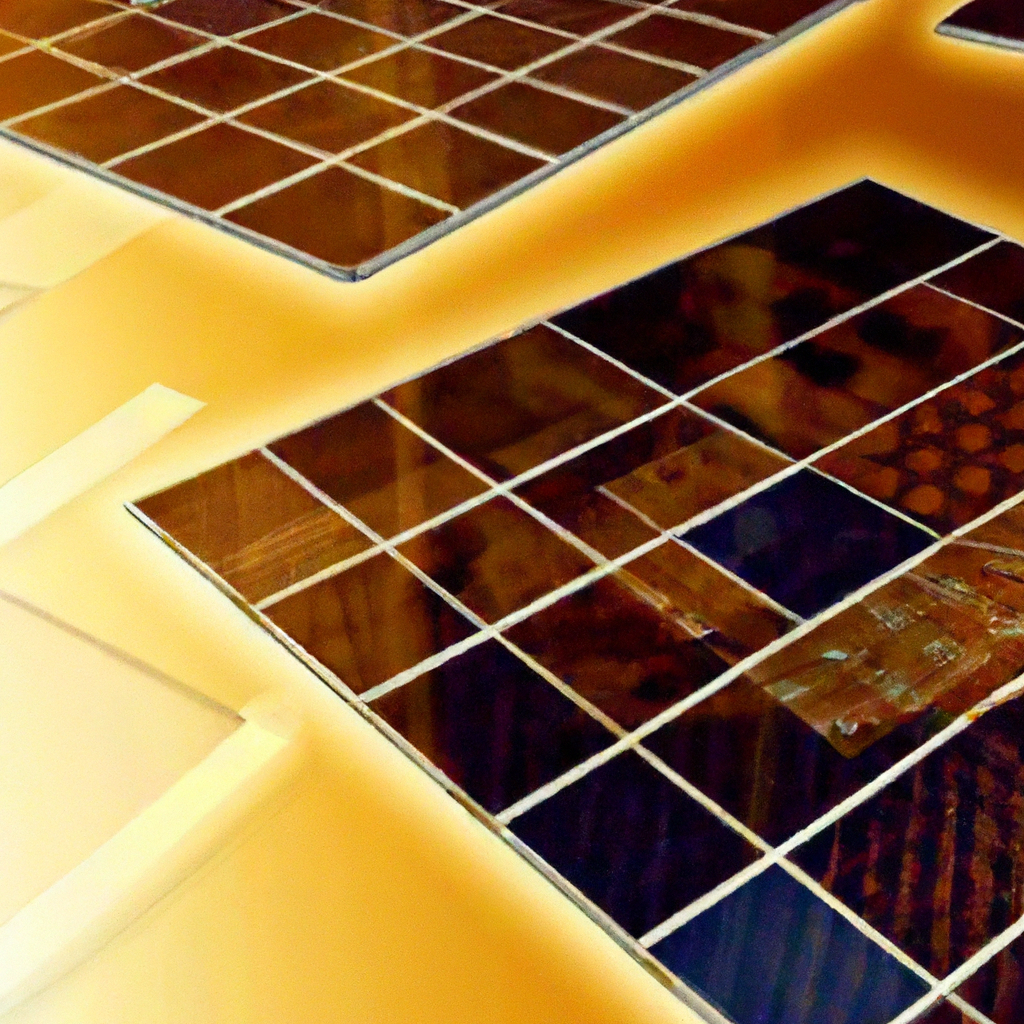Imagine a world where buildings could repair themselves – cracks filling in, structural damage healing on its own. It may sound like something out of a science fiction movie, but self-healing materials are quickly becoming a reality in the construction industry. These innovative materials have the potential to revolutionize the way we build and maintain our structures, offering a sustainable solution that could reduce waste and extend the lifespan of buildings. In this article, we will explore the fascinating world of self-healing materials and their promising future in construction.

Understanding Self-Healing Materials
The Concept Behind Self-Healing Materials
Self-healing materials are a revolutionary class of construction materials that have the ability to independently repair any damage or wear they may sustain over time. Unlike traditional materials, which require external intervention or maintenance, self-healing materials have an inherent ability to heal and restore themselves. This concept is inspired by natural healing processes found in living organisms, such as the healing of wounds in human bodies. By incorporating these self-repair mechanisms into construction materials, engineers and scientists hope to create a more sustainable and durable built environment.
Different Types of Self-Healing Materials
There are several different types of self-healing materials, each with its unique mechanisms and properties. One prominent class of self-healing materials is called intrinsic self-healing materials. These are materials that contain capsules or channels filled with healing agents such as adhesives or healing agents that are released when damage occurs. Another type is extrinsic self-healing materials, which involve the addition of external healing agents to the material. This can be in the form of fillers, coatings, or additives that are activated upon damage. Additionally, there are bio-inspired self-healing materials, which are designed to mimic natural healing processes observed in biological systems. These materials often incorporate microorganisms or biological components to facilitate healing.
How Self-Healing Works: An Overview
The underlying mechanisms of self-healing materials vary depending on the type of material and its specific composition. However, the general principle involves the activation and release of healing agents upon damage. When a crack or fracture occurs in a self-healing material, the healing agents are either released from embedded capsules or channels, or they are activated through various stimuli, such as heat, light, or moisture. Once released, these healing agents fill the void created by the damage, effectively repairing and restoring the material’s structural integrity. In some cases, the healing process can occur multiple times, allowing the material to withstand repeated damage and extending its lifespan.
Role of Self-Healing Materials in Sustainable Construction
Need for Sustainability in the Construction Industry
The construction industry is one of the largest contributors to environmental degradation, resource depletion, and carbon emissions. Therefore, there is an urgent need for sustainable practices and materials within the industry. Sustainable construction aims to minimize the environmental impact of buildings and infrastructure throughout their lifecycle, from design and construction to operation and demolition. By reducing waste, optimizing energy efficiency, and using eco-friendly materials, sustainable construction helps mitigate climate change, conserve resources, and create healthier living environments.
Contribution of Self-Healing Materials Towards Sustainability
Self-healing materials play a crucial role in advancing sustainability in the construction industry. By reducing the need for frequent repairs and replacements, self-healing materials can significantly extend the lifespan of buildings and infrastructure. This not only minimizes waste but also reduces the consumption of virgin materials, energy, and resources required for manufacturing and construction. Additionally, self-healing materials can enhance the durability and resilience of structures, making them more resistant to environmental factors such as corrosion, weathering, and structural fatigue. This increased durability translates into reduced maintenance and repair costs, further contributing to the overall sustainability of construction projects.
Long-Term Benefits of Using Self-Healing Materials
The adoption of self-healing materials in construction offers numerous long-term benefits. Firstly, it leads to increased structural reliability and longevity, as the materials can heal and repair themselves, reducing the risk of catastrophic failures. Secondly, self-healing materials decrease the need for costly and disruptive maintenance activities, resulting in significant cost savings over the lifespan of a building or infrastructure. Thirdly, the enhanced durability of self-healing materials reduces the frequency of material replacements, saving valuable resources and reducing waste. Lastly, by incorporating self-healing materials into the built environment, we can promote a more sustainable and resilient construction industry that aligns with the global goals of environmental stewardship and responsible resource management.
Current Applications of Self-Healing Materials in Construction
Use in Concrete Structures
Concrete is one of the most widely used construction materials, but it is prone to cracking and deterioration over time. Self-healing concrete, also known as bio-concrete, has emerged as a promising solution to this issue. By embedding self-activating capsules filled with bacteria and calcium carbonate in the concrete mix, cracks in the structure can be autonomously repaired. When water enters these cracks, the bacteria are activated and produce calcium carbonate, filling the cracks and restoring the concrete’s integrity. This technology has already been successfully utilized in various real-world applications, including bridges, tunnels, and roadways.
Application in Pipes and Plumbing
Leakages in pipes and plumbing systems can cause significant damage and water loss. Self-healing materials can help mitigate these issues by automatically sealing any leaks that occur. One approach involves incorporating microcapsules filled with adhesives or sealants into the plumbing materials. When a leak occurs, the capsules rupture, releasing the adhesive and sealing the leak. This self-repair mechanism can help conserve water, prevent property damage, and reduce the need for frequent repairs and replacements.
Role in Enhancing Durability of Construction Materials
Self-healing materials also have the potential to enhance the durability of various construction materials. For example, self-healing coatings can be applied to metal surfaces to protect against corrosion. These coatings contain encapsulated healing agents that are released when damage or corrosion occurs, preventing further degradation and prolonging the lifespan of the metal. Similarly, self-healing polymers can make plastic-based construction materials more resistant to wear, tear, and damage, reducing the need for replacements and minimizing waste.
Innovations and Advancements in Self-Healing Materials
Latest Technological Developments
The field of self-healing materials is continuously evolving, driven by ongoing research and technological advancements. One recent development involves the use of shape-memory polymers, which have the ability to change shape in response to external stimuli and heal themselves after deformation. This allows for the creation of materials that can self-repair and adapt to changing conditions. Additionally, researchers are exploring the integration of responsive materials that can sense and respond to specific environmental triggers, such as temperature or pH changes, to initiate the healing process. These advancements are expanding the potential applications of self-healing materials in construction and paving the way for even more sustainable and resilient built environments.
Impact of Nanotechnology on Self-healing Materials
Nanotechnology plays a significant role in the advancement of self-healing materials. By manipulating materials at the nanoscale, scientists can enhance their healing properties and create more efficient and durable self-healing systems. Nanoparticles and nanofillers can be incorporated into self-healing materials to provide additional strength, elasticity, and responsiveness. Furthermore, nanocapsules filled with healing agents can be designed to release their contents more effectively, improving the healing process. The integration of nanotechnology into self-healing materials holds immense potential for creating highly efficient and sustainable construction materials with superior performance characteristics.
The Future of Self-Healing Materials: Projections and Predictions
The future of self-healing materials in construction is promising, with numerous advancements and applications on the horizon. As research continues and technology progresses, self-healing materials are expected to become more cost-effective, widely available, and versatile. The integration of self-healing mechanisms into traditional construction materials and the development of entirely new self-healing materials will revolutionize the industry, leading to stronger, longer-lasting, and more sustainable structures. Moreover, the progress in nanotechnology and material science will unlock new opportunities for innovation and further expand the possibilities of self-healing materials in construction.

Challenges in Implementing Self-Healing Materials in Construction
Barriers to Wide-Scale Adoption
Despite their immense potential, there are several barriers to the wide-scale adoption of self-healing materials in the construction industry. One significant challenge is the high upfront cost associated with these materials, which can deter builders and developers from using them in their projects. Additionally, the lack of standardized testing and certification protocols specific to self-healing materials can create uncertainty and limit their acceptance in the market. Furthermore, the conservative nature of the construction industry and resistance to change can present obstacles to the adoption of innovative materials and technologies.
Technological Hurdles
The development and implementation of self-healing materials also face technological hurdles that need to be overcome. Achieving precise control over the healing processes, ensuring compatibility with existing construction techniques and practices, and optimizing the performance of self-healing materials under various environmental conditions are some of the technical challenges that researchers and engineers are actively working to address. Collaboration between material scientists, engineers, and construction professionals is crucial to successfully surmounting these hurdles and realizing the full potential of self-healing materials in the built environment.
Economic Considerations and Feasibility
Economic considerations and feasibility play a crucial role in the widespread adoption of self-healing materials. Builders and investors must evaluate the cost-effectiveness and return on investment of these materials compared to traditional construction materials. While self-healing materials may have higher initial costs, the potential long-term savings in maintenance, repair, and replacement expenses can offset these upfront expenses. Additionally, advancements in manufacturing processes and economies of scale can help drive down the cost of self-healing materials, making them more financially viable for widespread use.
Impact on Construction Costs
Cost-Benefit Analysis of Self-Healing Materials
Performing a comprehensive cost-benefit analysis is vital to understanding the financial implications of using self-healing materials in construction projects. While the upfront costs of self-healing materials may exceed those of traditional materials, the long-term benefits can result in substantial cost savings. By reducing maintenance, repair, and replacement expenses, self-healing materials can offset their initial cost premium. Moreover, the increased durability and extended lifespan of self-healing materials can contribute to overall project efficiency and reduce the potential for unexpected costs associated with material failure or degradation.
Potential Long-Term Savings
The utilization of self-healing materials can result in significant long-term savings for construction projects. By minimizing the need for repairs and replacements, building owners can save on labor costs, material costs, and associated disruption to operations. Furthermore, self-healing materials can reduce energy consumption and improve energy efficiency, resulting in lower operational costs over the lifespan of a building. The exact magnitude of these long-term savings depends on several factors, including the specific application, material composition, and the expected lifespan of the structure.
Factors Influencing the Cost of Self-Healing Materials
Several factors influence the cost of self-healing materials. One primary factor is the complexity of the self-healing mechanism and the materials required to achieve it. More advanced self-healing systems and sophisticated materials may come at a higher cost. The scale of production also plays a significant role in determining the cost, as large-scale manufacturing can lead to economies of scale and reduced per-unit costs. Additionally, the availability of raw materials, energy prices, and the level of competition in the market can influence the cost of self-healing materials. As technology advances and the industry matures, it is expected that the costs will gradually decrease, making self-healing materials more affordable and accessible.

Regulatory Scenario and Standards for Self-Healing Materials
Existing Regulations and Standards
Currently, there are limited specific regulations and standards for self-healing materials in the construction industry. However, self-healing materials generally fall under existing regulations and standards for traditional construction materials, such as concrete, steel, and polymers. These regulations focus on factors such as structural integrity, fire resistance, and environmental impact. As the adoption of self-healing materials expands, there may be a need for the development of specific regulations and standards to address their unique properties and characteristics. Harmonizing international standards and ensuring compliance with safety and performance requirements will be essential for the widespread acceptance and safe use of self-healing materials in construction projects.
Need for New Protocols and Guidelines
To facilitate the implementation of self-healing materials in construction, the development of new protocols and guidelines specific to these materials is necessary. These guidelines should provide recommendations for material selection, design considerations, testing procedures, and maintenance practices related to self-healing materials. Industry associations, research institutions, and regulatory bodies have a critical role to play in collaboratively developing these guidelines to ensure safe and effective use of self-healing materials. Clear and comprehensive guidance will not only help builders and designers navigate the complexities of using self-healing materials but also instill confidence in regulators and end-users.
Compliance and Enforcement Challenges
Enforcing compliance with regulations and standards for self-healing materials may pose challenges. Due to the unique properties and mechanisms of self-healing materials, quality assurance, testing, and inspection processes may need to be adapted or developed specifically for these materials. Additionally, the variability in self-healing material compositions and properties can make it challenging to establish uniform compliance criteria. The establishment of independent certification bodies and third-party testing laboratories can help address these challenges, ensuring that self-healing materials used in construction meet the required safety and performance standards.
Case Studies on Self-Healing Materials in Construction
Successful Implementation Examples
Numerous successful implementations of self-healing materials in construction serve as evidence of their effectiveness and potential. For instance, the Delft University of Technology in the Netherlands has applied self-healing concrete in the construction of a bicycle bridge. The self-healing concrete employed in this project utilizes embedded capsules filled with a healing agent that is released upon crack formation, effectively repairing the concrete structure. Another example is the use of self-healing polymers in roofing membranes, resulting in the mitigation of leaks and enhanced durability.
Learnings and Insights from Real-Life Cases
Real-life case studies offer valuable insights into the practical aspects of using self-healing materials in construction. These studies provide information on the performance, functionality, and long-term viability of self-healing materials in various applications and environments. They shed light on the challenges encountered during implementation, the strategies employed to overcome these challenges, and the overall benefits achieved. By analyzing the successes and lessons learned from these cases, researchers and professionals can refine and optimize the design, production, and utilization of self-healing materials in future projects.
How Case Studies Reflect Potential for Future
The case studies conducted so far reflect the immense potential of self-healing materials in revolutionizing sustainable construction. These real-world applications demonstrate the ability of self-healing materials to improve the durability, resilience, and lifecycle performance of buildings and infrastructure. They also highlight the economic and environmental benefits that can be realized through the adoption of self-healing materials. As more case studies emerge and self-healing materials become more mainstream, the industry will gain a deeper understanding of their capabilities, limitations, and optimal utilization, laying the foundation for a future where self-healing materials are an essential component of sustainable construction practices.

Consumer Perceptions and Market Acceptance
Current Market Perception of Self-Healing Materials
The current market perception of self-healing materials is generally positive, albeit with some skepticism and cautiousness. Builders, developers, and consumers recognize the potential benefits that self-healing materials offer, such as increased durability, reduced maintenance costs, and enhanced sustainability. However, concerns about the upfront cost, reliability, and long-term performance of self-healing materials still exist. Education and awareness initiatives are crucial in shaping the market perception and dispelling misconceptions surrounding self-healing materials, highlighting their value and potential to revolutionize the construction industry.
Factors Influencing Consumer Acceptance
Several factors influence consumer acceptance of self-healing materials. Cost is a significant factor, as builders and consumers weigh the upfront expenses against the long-term benefits and potential savings. Reliability and performance are also critical considerations, as consumers want assurance that self-healing materials will effectively repair and restore themselves over time. Additionally, the availability, accessibility, and demonstrated track record of self-healing materials influence consumer acceptance. Collaboration between manufacturers, researchers, and architects to develop reliable and accessible self-healing materials while addressing consumer concerns is essential to driving market acceptance.
Campaigns and Initiatives to Boost Market Adoption
Various campaigns and initiatives are underway to boost market adoption of self-healing materials. Industry organizations, research institutions, and government agencies are actively promoting the benefits and potential of self-healing materials through education campaigns, conferences, and industry events. These initiatives aim to raise awareness among stakeholders, provide evidence-based research and case studies, and foster collaboration between industry participants. Furthermore, incentives and subsidies may be offered to encourage the use of self-healing materials in construction, particularly in sustainable building projects. By creating a favorable market environment, these campaigns and initiatives accelerate the acceptance and integration of self-healing materials within the construction industry.
Conclusion: Are Self-Healing Materials the Future of Sustainable Construction?
Critical Evaluation of Pros and Cons
The adoption of self-healing materials in the construction industry presents both opportunities and challenges. On the positive side, self-healing materials offer increased durability, reduced maintenance costs, and enhanced sustainability. They have the potential to significantly extend the lifespan of structures, reduce waste, and conserve resources. However, challenges such as high initial costs, technological hurdles, and regulatory complexities need to be addressed. The pros and cons of self-healing materials must be critically evaluated to determine their viability on a case-by-case basis and strike the right balance between sustainability and feasibility.
Potential Impact on the Construction Industry
The potential impact of self-healing materials on the construction industry is immense. The integration of self-healing mechanisms into construction materials will fundamentally change the way buildings and infrastructure are designed, constructed, and maintained. Structures will become more resilient, reliable, and durable, reducing the need for frequent repairs, replacements, and associated disruptions. This, in turn, will contribute to the overall sustainability and efficiency of the construction industry, aligning with global goals of mitigating climate change, conserving resources, and creating more livable environments.
Final Thoughts on The Sustainability vs Feasibility Debate
The sustainability vs. feasibility debate regarding self-healing materials must be approached with a balanced perspective. While self-healing materials offer tremendous potential to enhance sustainability, it is essential to consider the economic and practical feasibility of their implementation. Collaboration between researchers, engineers, regulators, and industry professionals is crucial to address the challenges, drive technological advancements, and establish a regulatory framework that supports the safe and effective use of self-healing materials. With the right approach and continued innovation, self-healing materials can pave the way for a more sustainable and resilient future of construction.











